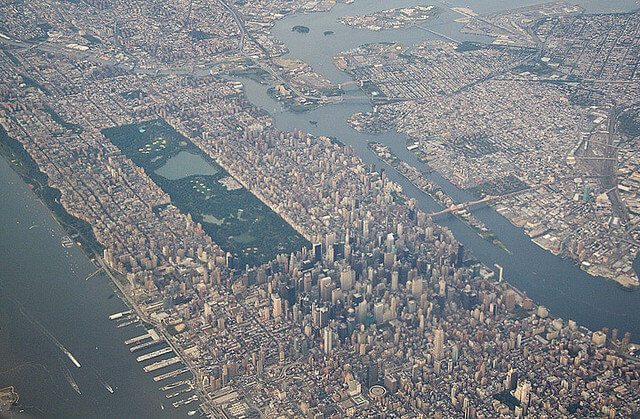So you’ve scratched downtown from your list and narrowed your future home to somewhere uptown. Tightening the search is a huge accomplishment, but you’ll still need to choose between the Upper East Side and the Upper West Side. If you assume these two nabes north of 59th Street are carbon copies, you couldn’t be more wrong. Each has a distinct personality as well as positive and negative selling points.
Carl Schurz Park, luxury boutique shopping on Madison Avenue, Fairway, a new Whole Foods Market on the way, and a plethora of neighborhood bars are a few of the advantages of living east.
Table of Contents
The Upper East SideThe Upper East Side
The Upper East Side has long had a reputation for being posher than its west side neighbor, with some of the most expensive apartments and exclusive buildings in the city on Park Avenue and Fifth Avenue. This is a fact, but Yorkville (stretching from East 79th to East 96th, Third Avenue to the East River), is a more affordable section that attracts a slew of post-college New Yorkers and young professionals.
Living at First Avenue or York Avenue is less expensive, but a long haul to the Lexington Avenue Subway. In a few years, however, the Second Avenue Subway will be up and be running, providing East Siders with another train option.
Currently, deals can be had near Second Avenue if you don’t mind temporary noise, construction, and debris related to the new train –– supposedly until 2016. (I had the pleasure of living at First Avenue for two years when the mess began, and I moved clear across town to get away.)
Any apartment near the zone will more than likely cost less than those a few blocks away, so if you can handle the hassle, you can probably save some cash. Once the subway is complete, you’ll have a smart investment in your hands since property values will most likely increase after the new train line is up and running.
Other perks to being an Upper East Sider include Central Park, a growing restaurant scene, and more space for the money as compared to the Lower East Side.
The Upper West SideThe Upper West Side
Life on the Upper West Side will generally be more laid back, in general. Expect a more diverse, liberal crowd than across town. This section of uptown is home to artists, musicians, writers, professors, and other creative types. The area is characterized by grand prewar apartment buildings and blocks of charming brownstones.
Riverside Park along the Hudson River always provides great ambiance and wide-open spaces. The park boasts some lovely features, such as the 91st Street Garden (featured in You’ve Got Mail), the Soldier & Sailor’s Monument at 89th Street, and the 79th Street Boat Basin, a dog-friendly bar, and restaurant which overlooks the Hudson River.
Interesting boutiques line Columbus Avenue in the West ‘70s, and you’ll find a good number of retailers on Broadway, including Century 21 near the south end of the neighborhood.
Shopping at Zabar’s can’t be beaten. Upper West Siders love the 80-year-old institution –– patrons travel near and far for the spot’s delicacies.
A walk east to Central Park is speedier than the comparable walk across town. After living in both the Upper East and the Upper West, I can vouch. Reaching Central Park from the farthest point on the Upper West Side takes no more than 15 minutes. Traveling on foot from the most distant street on the Upper East –– East End Avenue –– to Central Park is a 20-minute walk, minimum.
ConclusionConclusion
The Upper West Side isn’t known for its dining scene, but a handful of reputable restaurants have opened in the past couple of years. Overall, the East Side wins when it comes to food and nightlife.
But the amount of culture on the UWS can’t be beaten. The east side does proudly include Museum Mile and the 92nd Street Y, but on the west side, you can’t ignore the many performance options at Lincoln Center, a hub for the arts and home to Julliard.
The American Museum of Natural History lies in the heart of the neighborhood, as does the Historical Society, and the Mannes School of Music, with the Museum of Art & Design and The American Folk Art Museum, is near Columbus Circle, while Symphony Space is located toward 96th Street.
Subway lines run on Central Park West and Broadway, offering more options than the sardine-like trains across town, making for a more pleasant commute.

